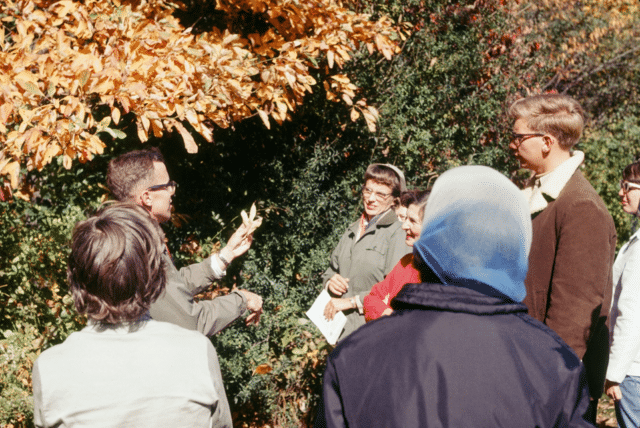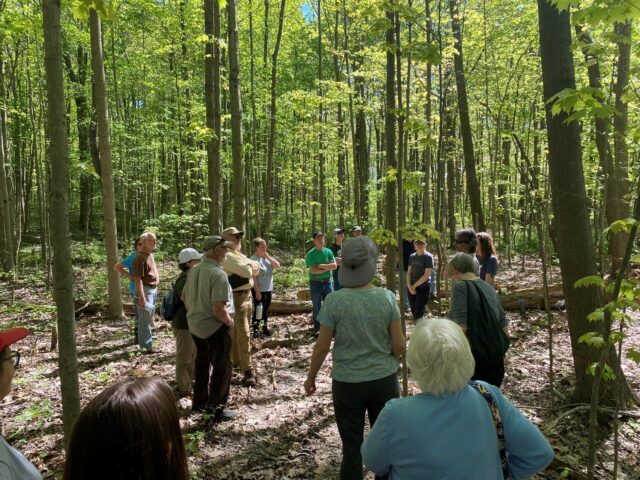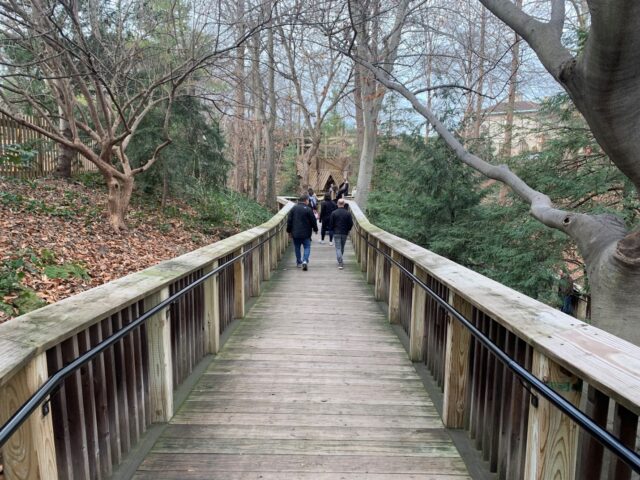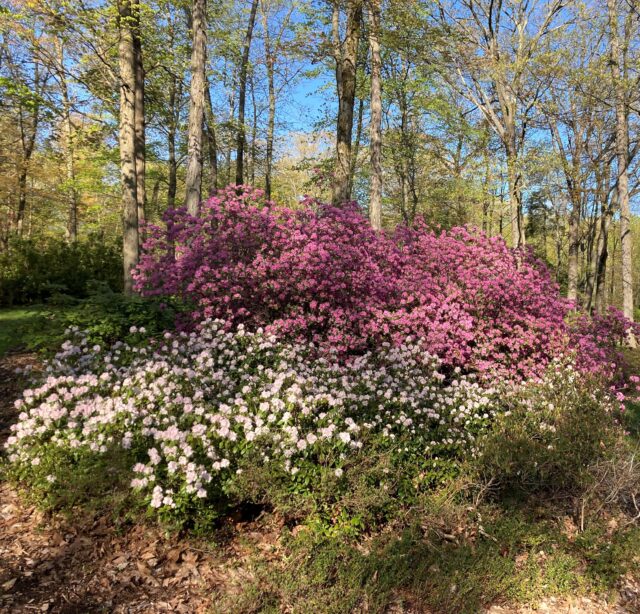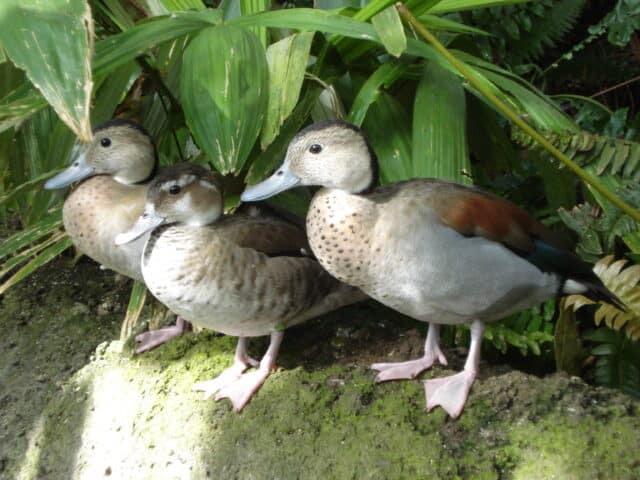
By Annie Rzepka, Director of Arboretum Horticulture
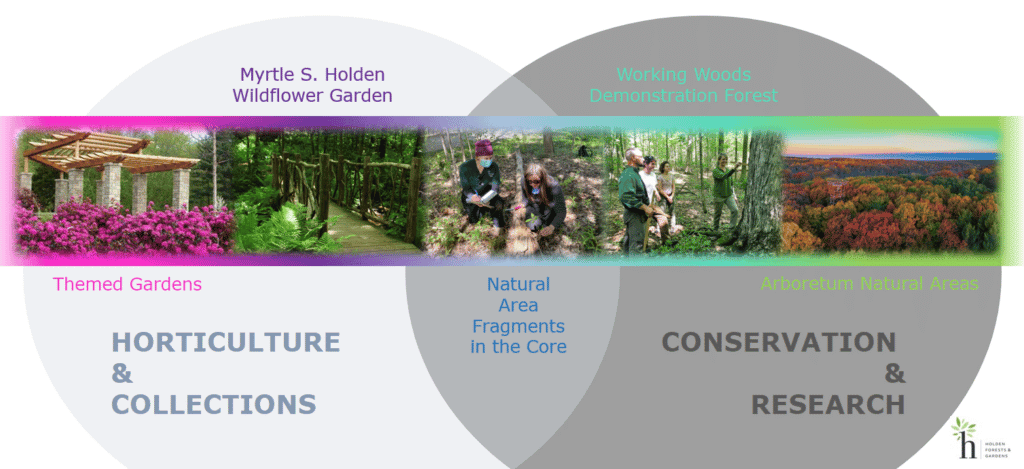
One of the many reasons HF&G is unique is that one membership affords a matrix of high quality natural and cultivated landscape experiences across multiple campuses. These experiences are the product of time, geologic conditions, evolutionary biology and the foresight of our founders to preserve them. They are held to integrity through planned land management conducted by our boots-on-the ground team of conservationists, horticulturists and scientists in their respective departments.
Traditionally, Science & Conservation department efforts at the Arboretum focused on the natural lands that comprise over 3,000 acres of the Arboretum’s property in Lake and Geauga counties.
These natural areas preserve the botanical heritage of Northeast Ohio and provide scientists an opportunity to explore and understand the attributes that contribute to the richness and diversity of these high-quality natural areas and, thus, inform management strategies.
The Horticulture & Collections department at the Arboretum has concentrated efforts toward the care and maintenance of an expanding Living Collection, cultivated for conservation, education and the sheer beauty within the 232 acre core of the Arboretum.
Contained by the deer fence, the Arboretum Core comprises a gradient of landscapes ranging from highly designed and curated gardens to managed meadows and forest fragments.
In 2020, the departments convened to explore how these spaces could be leveraged in support of the HF&G mission. Staff identified the fragmented forests within the core that were highly visible to guests and began to inventory the species diversity within the existing plant communities. A little over 30 acres of fragmented forests were identified in these initial assessments ranging in size from a half acre to 7 acres — now referred to as the Core Natural Areas. This is significant within the context of the greater forested land in Ohio because small, fragmented forests represent over 1 million acres of the forested land within the state of Ohio, and 85% of these forests are privately owned. (USDA, Ohio Forests Resource Bulletin, NRS -118)
Initial plant inventories revealed an array of invasive exotic woody species, including Frangula alnus (glossy buckthorn), Rosa multiflora (multiflora rose) and Ampelopsis glandulosa var. brevipedunculata (porcelain berry). These invasive species quickly alter the area they invade — changing the availability of water, light and nutrients, and forming dense monocultures, which reduce native plant regeneration and diminish habitat quality (Pimentel et al. 2005). These findings were also significant within the broader context of Ohio’s forested land as the state has a higher percentage of plots with one or more invasive plant species (96%) than surrounding states. (Widmann et al. 2014)
With these in-house knowledge and skills we are uniquely equipped to marry our horticulture and conservation practices to better understand the dynamics and to implement management strategies within these fragmented forests.
These management strategies will help improve the overall aesthetic experience in the Arboretum Core, creating visually appealing transitions between highly cultivated gardens and natural lands. They will also have the potential to demonstrate how private landowners can improve their own forests, thus impacting forest health broadly throughout our communities.
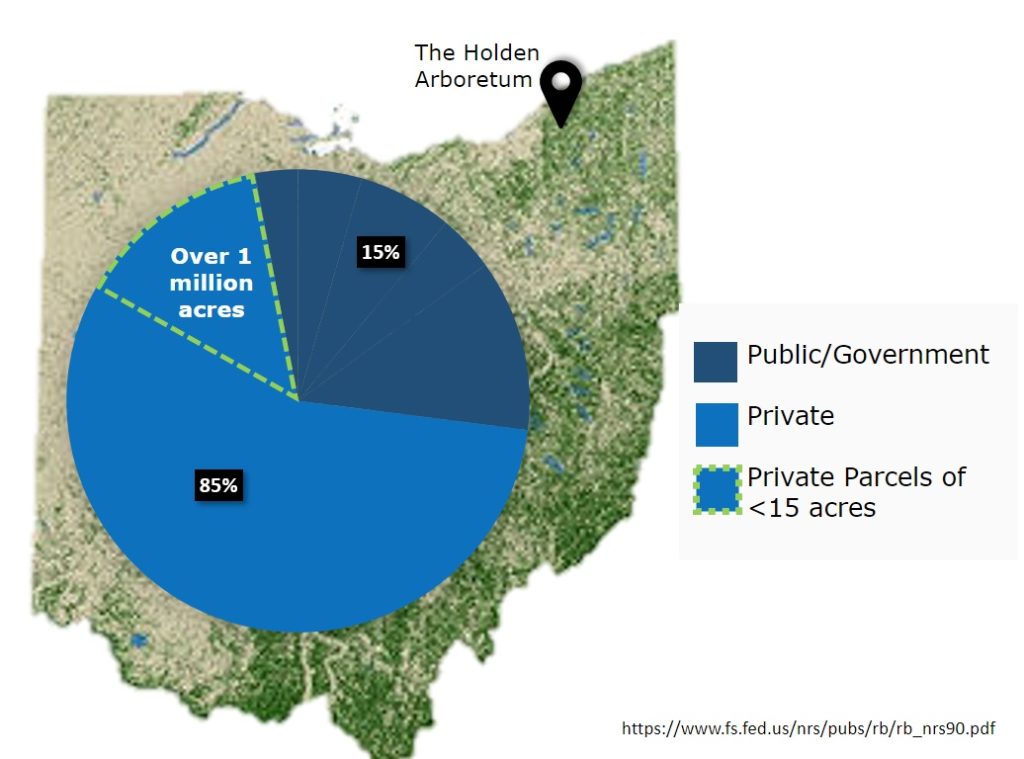
On the ground we’ve encountered less-than-ideal weather, pandemic challenges and have had to coax the woodchipper into action. These hurdles serve to grow collaborative relationships, and over more than a year of action we’re really getting into a groove. We’re currently working on the Core Natural Area due east of the 2-acre Butterfly Garden. Especially in October and early November, when the temperatures were a little warmer, the effort required us to drag brush hundreds of feet and even up elevated and sometimes muddy inclines was impressive.
Probably the most delicate aspect of the operation is the disposal strategy for all the waste material we generate. We all agree that the most important disposal strategy is one where we’re spreading the invasives as little as possible. While there are legitimate options to leave or remove the waste material for disposal elsewhere, for now we’re leaving the waste material on-site.
Work is ongoing in that Core Natural Area, the most inundated of the sites. Once that is complete, we’ll have a nice template for how to do every future site in as economical and sustainable of a way as possible. We will share this with our guests and community homeowners to consider for their own backyard fragmented forest habitat.
Based on joint experience, we need about two years to manage invasives and their seedbanks before restoration planting can occur. At that point, we aim to introduce many native plants that can hold their own or repress aggressive invasives. Agroforestry elements will start to creep into the design palette; both native and non-aggressive exotic edible plants will be favored; maybe even hearken to our rural surroundings and explore how livestock and perennial plantings can go hand-in-hand; plant windbreaks to create microclimates for plants more suited for a slightly-warmer growing zone; include nearly-forgotten practices like coppicing and pollarding; use plants that can adapt to our changing climate. The list of possibilities goes on.
In short, the Core Natural Areas act as bridge between our cultivated garden and high-quality forest communities to demonstrate an ecosystem continuum on which private lands throughout the state can be modeled on.

Annie Rzepka
Director of Arboretum Horticulture
